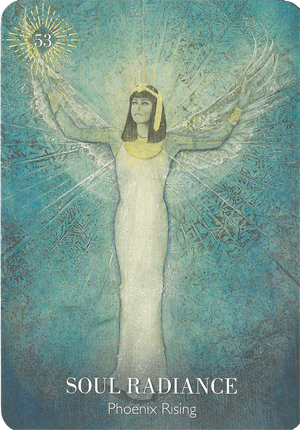Alexa Lane | Motivational Speaker and Author
Spirituality and Natural Healing
Full Moon Meditation Ritual

A Full Moon is a beautiful time to be creative, express gratitude, release unproductive energy, and forgive yourself and others. It’s a time to nurture yourself, relax, and reflect upon where you have been and where you want to go.
On a Full Moon, take time to explore your karmic patterns. With clarity, you can move forward and let go of the past.
Full Moon Ritual
- Create a clean, clutter free space.
- You may want to diffuse essential oils to clear energy.
- You may use crystals like clear quartz (enhances spiritual awareness), amethyst (calming and protective), black tourmaline (releases negativity), obsidian (releases negativity).
Practice Five Minutes of Gentle Restorative Yoga

- Sit in a comfortable seated position with your spine erect
- Take several deep breaths
- Express a positive affirmation or sing a sacred chant you love like “Om”
- Write down any habit or unproductive thought patterns that you would like to release
- Fill your heart with love, imagine everything you would like to release dissolving into love.
- Offer forgiveness and gratitude
- Release the energy to the universe
- Offer love to All
- You may like to choose an Oracle or Tarot card to further your introspection and meditation.
Evolutionary Astrology and the Lunar Nodes
What is the Ecliptic and the Zodiac?
Briefly, the Earth’s orbit around the Sun is called the ecliptic. You may visualize the ecliptic as a flat circular plane. Extended out from the ecliptic is an imaginary celestial sphere that encompasses Earth at its center. Connecting to the ecliptic is a starry backdrop or band of constellations surrounding the paths of the Sun, Moon, and planets called the Zodiac.
What are the North and South Lunar Nodes?
The Moon orbits the Earth on a separate circular plane. However, the plane of the Moon’s orbit inclines approximately five degrees. Therefore, the orbits of the Earth and the Moon do not lie evenly to each other. The North Lunar Node is the point where the plane of the Moon’s orbit rises above the ecliptic. The South Lunar Node is the point where the plane of the Moon’s orbit is below the ecliptic.
The Lunar Nodes represent energetic points that oppose each other. They refer to our ancestral ties, past lives, karma, and evolutionary future.
The South Node represents where we came from, circumstances left unfinished, karma, what worked and what did not, and our wounds. It may reveal familiar scenarios or things we learned from our family of origin.
The North Node is where we rise and, possibly, heal. It is utterly foreign to us and provides keys to the evolution of the soul in this lifetime. By exploring the symbolism of the North Node, the individual can progress on their path and heal past challenges. The North Node opens the door to higher possibilities and represents novel ideas and unexplored territory.
Basics of meditation

Meditation Basics
Today, I’m sharing with information on the benefits of meditation and how it can help you transform your mind and body. Please refer to my videos for guided exercises.
Firstly, meditation is a skill anyone can learn. The key is to practice this skill each day in order to make a positive change. What you’ll notice, with daily practice, is an increase in equanimity, happiness, and an overall greater sense of well-being.
So, let’s begin with the impact meditation has on the nervous system and three regions of the brain: the prefrontal cortex, amygdala, and hippocampus.
Let’s start with the basics of the Nervous System
- The nervous system consists of the central nervous system, which isthe brain and the spinal cord,
- And the peripheral nervous system consisting of the nerves outside of the central nervous system.
Functionally, the nervous system divides into the Somatic nervous system and the autonomic nervous system.
- The somatic nervous system is under voluntary control: such as movements of the skeleton.
- and the autonomic nervous system is involuntary and responsible for the automatic actions of smooth muscles, the cardiac muscle, and processes like blood pressure, heart rate, and digestion
The autonomic nervous system further divides into the sympathetic and parasympathetic nervous systems.
- The sympathetic nervous system activates the fight, flight or freeze response when we encounter stress.
- The parasympathetic nervous system restores the body to a balanced, relaxed state of rest.
Now, let’s look at how mindfulness and meditation can help improve three parts of the brain and their functions.
Neuroscience Basics:
Prefrontal Cortex
The PFC is the region of the brain that plays a role in performing high-level executive functions such as focus, emotional regulation, self-regulation, bodily regulation, insight, response flexibility, attainment of goals, decision making, judgment, and intuition.
Additionally, the prefrontal cortex receives information from the network of neurons within the trunk of the body and visceral organs, such as the heart, lungs, stomach, and liver. This information travels to the PFC by the nerve fibers of the vagus nerves, the longest cranial nerves in the body.
You may experience the informationreceived from the visceral organs as a “gut instinct”, an intuitive hit, or an emotion or feeling.
When you are in a state of chronic stress or anxiety, the functioning of the PFC is impaired and your blood pressure and heart rate rise.
Introducing meditation techniques during times of stress can help stabilize your nervous system, increase your ability to concentrate, self-regulate, achieve your goals, and become more empathetic toward others.
The Amygdala
The amygdala is the region of the brain that processes fear, emotional reactions, memory, and stimulates the sympathetic response “fight, flight, or freeze.” The amygdala stores memories from past events, which may cause you to react habitually when under stress.
Meditation and mindfulness techniques help deactivate the stress response stimulated in the amygdala, so you can think clearly.
The Hippocampus
The hippocampus is the region of the brain that is associated with learning and memory. When you are experiencing stress, it may affect this part of the brain by inhibiting your ability to remember critical information.
Neurogenesis:
The process of neurogenesis (the growth of new neurons) is known to occur in the hippocampus. What’s exciting about this is that you can stimulate new neural networks based on your positive, conscious thoughts.With continuous practice and focus on the present, new information can enter the brain.
If we can understand these functions of the brain and the responses to stress, we can learn to deactivate impulsive behavior and replace it with a relaxed state of awareness. The key is to pay attention when you are in a state of stress and take the time to breathe before you react. Relaxed breathing will help turn on the parasympathetic nervous system, returning the body and mind to a state of balance and homeostasis.
Benefits of meditation.
Numerous studies have measured the physical, somatic, and psychological benefits of meditation and mindfulness. The results of these studies provide compelling evidence that you can elevate your brain to a new level of consciousness and joy.
Some of The Benefits of a Meditation and Mindfulness Practice Include:
- Reduction in stress,
- Reduction in anxiety and depression
- Reduction in blood pressure
- Lowered heart rate
- The enhancement of neurogenesis: the growth of new neurons and neuroplasticity: the brain’s ability to form new neural connections
- Increase in serotonin, oxytocin, GABA, endorphins, and dopamine
- Decrease in cortisol and norepinephrine
- Increased memory, clarity, creativity, compassion, and understanding
- Self-regulation/Emotional regulation: Increase in positive emotions and a decrease in painful emotions
- Decrease in inflammation
- Increase in telomerase: Enzyme that slows the aging process by lengthening telomeres
- Slowing down the atrophy of brain tissue associated with aging and preserving gray matter
- In the field of Psychoneuroimmunology: Studies suggest meditation has beneficial effects on the immune system.
Practice
Let’s take a deeper look at what happens when we practice and how to create positive change. In simple terms, during meditation, neural networks are stimulated and grow, promoting neurogenesis and neuroplasticity. These changes happen due to training your mind to place your awareness, concentration, and attention on the present moment in a relaxed state. Living in the present keeps you open to novel experiences.
Through the process of neurogenesis and neuroplasticity, you can create a new way of being. This process will help you let go of undesired ruminative loops, unconscious or automatic behaviors and heal from past trauma, anxiety, or depression.
This principle is known as Hebbian learning and the expression: “neurons that fire together, will wire together.” For example, as you learn to create a continuous state of relaxation and positivity during your meditation practice, you will increase and strengthen neural networks that elevate your mood and lower stress.
In turn, undesired neural networks are taken away by a process known as synaptic pruning. This action demonstrates another aspect of Hebbian learning “neurons that no longer fire together, no longer wire together.
This process will elicit a positive change resulting in an elevated state of consciousness and a greater sense of well-being.
Additionally, meditation offers you an opportunity to deepen your relationship with yourself and others. The practice increases your capacity to attune to others and experience greater love, empathy, and forgiveness.
As I mentioned previously, for change to occur, commit to practice each day. Practice feeling positive emotions flowing throughout your entire being, into every cell, and believe you can renew yourself. You will feel empowered and capable of manifesting the life of your dreams.
How to get Started with a Meditation practice
- The purpose of meditation is to decrease mental activity. It is the practice of transitioning from external awareness to an internal, quiet state.
- Slowly, your brain wave frequency will shift from an alert, Beta brain wave frequency to a calm, Alpha brain wave frequency. This process occurs as your place your attention on your inner world.
- Practicing meditation enables you to start to experience pure consciousness or “the space between two thoughts.” We are usually unaware of this space due to our constant mental activity. By directing our mind towards stillness and quiet, we can slip into this space.
- This mental state is an expanded state of unlimited potential and connection to your true self.
- As you practice, thoughts will naturally come up. When a thought arises, try your best to let it go without attaching to it, judging it, or drifting off.
Here are three simple techniques. They will help you develop your concentration. In yogic terms, we refer to this as Dharana. As you strengthen your ability to concentrate, your meditation will begin to flow. This flowing state is called Dhyana. The deepest level of your practice is the state of Samadhi. Here you are completely absorbed and lose a sense of time and space. In this state, you may experience intuitive or psychic insight.
The first technique is a repetition of a mantra or positive affirmation:
- A Common Mantra most people are familiar with is “OM”: The mantra “Om” represents the cosmic vibration of the universe.
- You may also use a short, positive, personal affirmation or prayer. Ideally, keep the affirmation in the present tense. For example, “I radiate health” “I am prosperous.”
Breath:
- Practice placing your awareness on your breathing
Visualization:
- Visualize a symbol or image that is meaningful to you
- Focus on a specific chakra
Heart-brain coherence

Heart-Brain Coherence
During these unprecedented times many of us are looking for ways to lower our anxiety and find peace.
Learning to navigate our emotions and to understand their effects on the brain is imperative. Many of us are turning toward mind/body practices like meditation and mindfulness to help restore ourselves to a state of balance and the benefits have been well researched.
Emerging research adds another component to mental and emotional wellness.
Numerous studies, including those performed by the HeartMath Institute Research Center, suggest that the heart and positive emotions can have an impact on the brain. These studies on the field of neurocardiology explore how the heart communicates with the brain and how the activity of the heart influences our emotions, intuition, and health.
Neurocardiology Basics:
The field of neurocardiology examines the relationship between the cardiovascular system and the nervous system.
- The cardiovascular system consists of the heart and the blood vessels.
- The nervous system consists of the central nervous system (the brain and the spinal cord)
- The peripheral nervous system (the nerves outside of the central nervous system).
Functionally, the nervous system is divided into the somatic nervous system and the autonomic nervous system.
- The somatic nervous system is under voluntary control and the autonomic nervous system is involuntary.
The autonomic nervous system is further divided into the sympathetic and parasympathetic nervous systems.
- The sympathetic nervous system activates the fight, flight or freeze response.
- The parasympathetic nervous system restores the body to a relaxed state of rest and digest.
Additionally, neurocardiologists discovered that within the heart there is neural network that can be described as a brain, known as the heart-brain or intrinsic cardiac nervous system. The complexity of this system allows the heart-brain to act independently of the cranial brain and to send messages from the heart to the brain.
Learning to regulate the heart-brain can create a state of integration and balance termed heart-brain coherence. The heart-brain plays a role in memory, decision making, feeling, self-regulation, and intuition.
How does it work?
The Autonomic Nervous System sends messages through the body by efferent and afferent pathways.
- Efferent: Descending from the brain to the peripheral body
- Afferent: Ascending from a nerve receptor to the brain
It’s commonly known that the efferent pathways of the ANS participate in the regulation of the heart.
However, research has found that the afferent pathways from the heart send more information to the brain than the brain sends to the heart.
To put this complex process in simple terms, information is sent from the heart to the brain by the nerve fibers of the vagus nerves also called the 10th cranial nerves. They are the longest cranial nerves and the main cranial nerves of the parasympathetic nervous system. Additionally, 80% of the nerves fibers of the vagus nerves are afferent, so messages from the intrinsic cardiac nervous system travel up to the brain by the afferent pathways of the vagus nerves.
The vagus nerves supply most of the organs in the thoracic and abdominal cavities, including the heart, stomach, and lungs, and carry motor impulses to the larynx and pharynx. They innervate the heart’s sinoatrial node (SA node) and play a significant role in heart rate variability (HRV).
Therefore, with science in mind, learning to connect to your heart will help you feel more balanced.
The Practice
Heart-brain coherence:
To enter into heart-brain coherence, you are going to combine a clear intension with uplifting emotions such as gratitude, compassion, love or joy.
- For example, you may have the clear intension “To manifest healing or abundance or a new job.”
- At the same time, feel positive, uplifting emotions while you are visualizing your intension.
By focusing and embodying these emotions you will feel your energy shift to a higher level of consciousness, ultimately, raising your vibration.
Here is a link to a new moon meditation based on Heart-Brain Coherence.
For more information on Heart-Brain coherence please go to the HeartMath Institute website.



